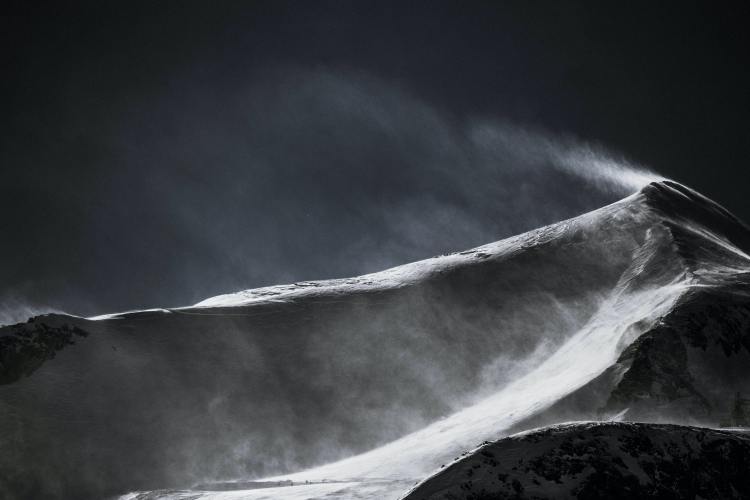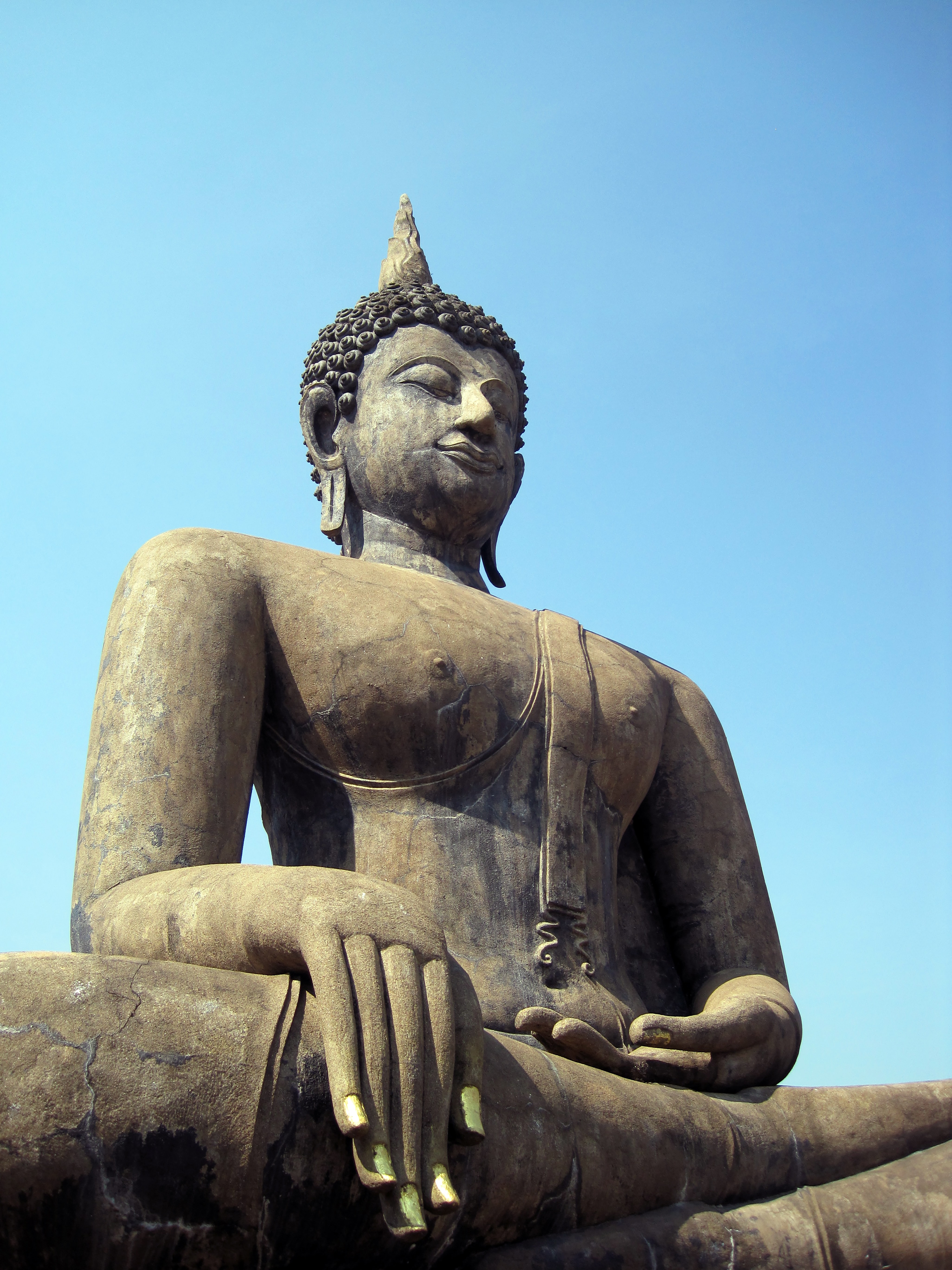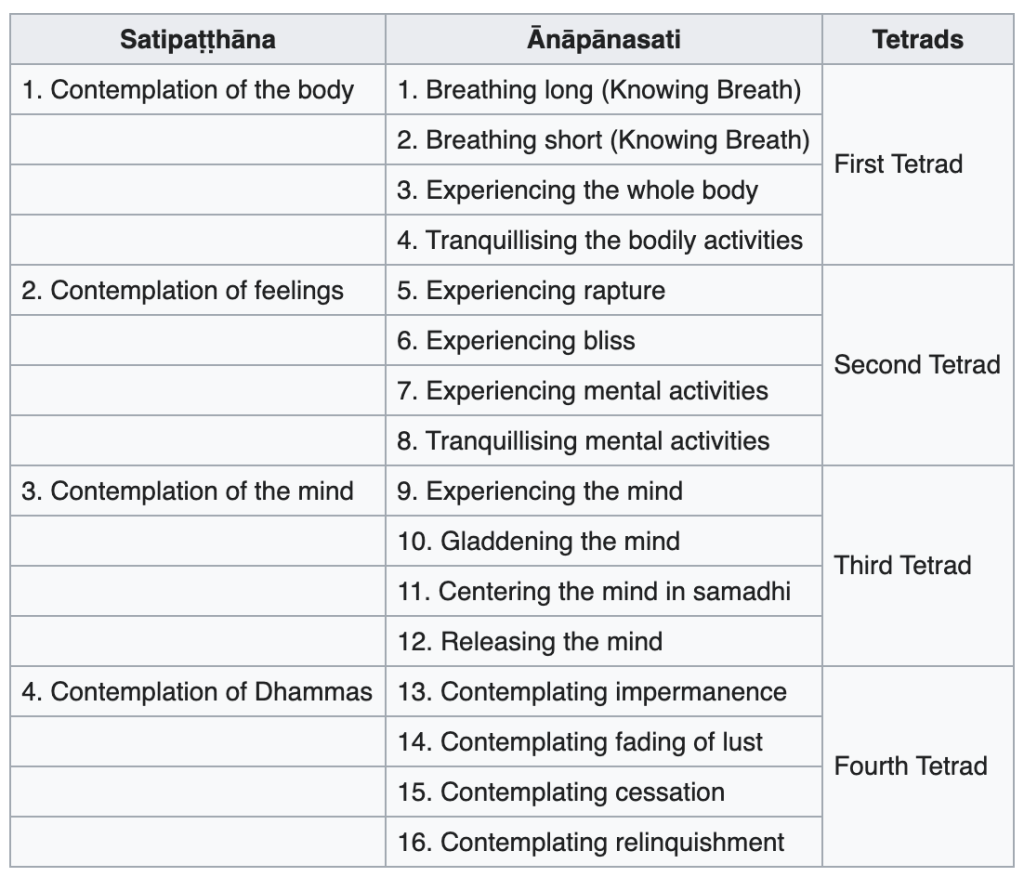March 13, 2023 Update: Part 2 of this Breath: Questions for Contemplation; Perceptions and Practice Ideas is now available for purchase on Insight Timer as the five-day Progressive Breath Awareness Booster course and is entirely free for Plus members (which includes a 1-month free trial). Day one is free for everyone: https://insighttimer.com/meditation-courses/progressive-breath-awareness-booster or the easy to remember: https://tinyurl.com/breathcourse
Easy to remember custom URL for this article: tinyurl.com/integratingbreath
After jotting down intuitive information and collecting odds and ends of teachings on breath for quite some time, I’ve finally compiled the first part into a video (along with an MP3 audio version) and include a (tran)script below:
Or listen via Insight Timer (app or website)
Disclaimer: it may be wise to find a balance with this material for whatever it may bring up: intrigue, fear, relief, breakthrough, novelty, overwhelm, overkill, irrelevancy, etc. One can pause the video at anytime for contemplation.
Or instead of viewing as study and practice instructions just sit back and take this in as a display of possibilities — letting the material resonate with whatever strikes as vital.
However you’re called to receive this presentation please take what is skillful, wise and useful/helpful and leave the rest. Also, this presentation could easily become outdated and/or refuted.
For any questions posed in the material it is encouraged to engage each question the following four ways, both internally to yourself, and to me with any counter-questions for both of our benefit:
- answer directly
- answer with analysis (and elaboration after deconstructing)
- answer by counter-question(s)
- do not answer, or give no response
In addition to this public presentation the private portion may be given if working with me, or may be released later. Much of what’s public is aggregated from other public sources while the private includes material I’m unsure of what portion is public and what portion is not.
Both the public and private presentations primarily address the breath through approaches, observations, conjecture, perceptions, practice ideas, and inquiries ranging from simple, commonplace, practical, and broad overviews to the bizarre, obscure, esoteric, and minutia while sometimes these categories overlap.
Overall, a basic bare awareness of breath is primarily needed. Again, this presentation is not to overwhelm, for overthinking, for comparison, or judgement. Rather, to enhance the likelihood of maintaining and/or prolonging bare awareness of breath for/during breath practices.

Questions for Contemplation
- What if this was the first time noticing breath?
- What is more important than breath in this moment?
- What effects are the breath having right now (on any and all levels you have access to inside and outside)?
- How is your relationship with your breath in this moment?
- What is the relationship between light and breath?
- Instead of us being mindful of the breath, what about the breath being mindful of us, and of mindfulness itself?
- What is the difference between the experience I think I’m having and the experience my breath is having?
- Can your breath be stopped?
- How might a true, authentic admiration for breath help?
- What if the breath was allowed, was permitted to consciously assist in and assist with anything and everything?
- How might focusing on, and even seeking pleasure with(in) the breath, be helpful, wise and skillful?
- Can you trust that simple bare awareness of breathing is sufficient and enough?
- When waking up back to breath ask, “was what took me away pleasant or unpleasant?” And whatever is woken back up to, is it mental or physical?
- Who/what controls the breath and how?
- Can breath be seen, looked at, or focused upon as a tangible, visible object (in the mind’s eye)?
- When conscious of the breath, what of the breath still remains unconscious (or subconscious)?
- How does breath want to be known?

Perceptions
“Mindfulness of in-&-out breathing, when developed & pursued, is of great fruit, of great benefit.”
https://www.accesstoinsight.org/tipitaka/mn/mn.118.than.html
Advantages of breath as meditation object:
- Always available
- In the here and now
- Dynamic so it’s easier to focus on
- Minimal emotional charge helps the body and mind settle
If you want to go to point A to B, fully inhabit A — being fully here with experience.
Breathing grounds and centers us in a relaxed yet alert continuity of attention in the present moment
Instead of jumping out into the river of life to fight the rapids, or getting scared by the rapids, or getting swept away by them, let breathing be like being on a big stable boat in the river of life.
Sometimes if feels good to damn up the natural flow of the river of life to give the thinking mind a kind of freedom to spill out over the land.
This is dangerous though causing flooding while the river of life wants to keep flowing.
This continuity of life experience — to be and stay in the present moment — can be experienced in various worldly ways like with a heightened sense of fear — like mountain climbing — or intense demand of attention like preforming surgery, playing tennis, and with books and movies.
Meditation doesn’t naturally engage fear, entertainment, and interest so we develop this capacity to stay with experience without relying on something external as impetus.
Continuity of attention comes from:
- relaxation (a tense attention is exhausting) — tension can be fuel for wandering mind
- dedication — engaging our intensional faculty
- strength in mindfulness
- heightened awareness to know when the mind wanders off — initially takes a lot of effort but eventually this habit can allow the mind to be more at peace
- familiarity of what it feels like to be with the breathing so we know what it feels like when we wander off noticing a kind of loss of intimacy with parts of ourself
How Breath Can Cultivate Continuity of Attention:
- Inviting body and breath to relax, especially in the belly allows greater observation of the breath’s variations
- Like petting a cat, not continuously, but stroking intermittently from head to tail until purring
- Counting breath (initially to learn this technique, and if needed, then let go of counting)
- Labeling the “in” and “out” breaths. “In” for the in-breath. “Out” for the out-breath.
“Frozen breathing or held breathing is kind of like glue for attachment”
Breath Psychology:
One Italian word for breathing: “respirare” gives us the words “breathing” and “spiritual”
We also have “respiration”, “inspiration”, gas company “Spire”, “conspiracy” which the roots of the word mean to breathe together [https://www.etymonline.com/word/conspiracy#etymonline_v_28701]
And in psychology, “psycho” is of the mind and another meaning for “psycho” is “breathing” [https://www.etymonline.com/word/psycho-]
With in the breath itself, notice changes, emotions, attitudes, and psychology. Notice where mind wanders off.
Maybe the end of in breath is boring due to lack of sensation so one starts thinking about stuff.
Maybe there’s fear around the end of an out-breath not wanting to let go fully, and wanting control, wanting to get to the in-breath.
Maybe some don’t want to breathe out because of tendency to hold on to things, and not want to give things away.
Maybe a reluctance to breathe in if the world feels oppressive, not wanting to take on any more burdens, oppression, or work.
All this diminishes though with the continuity of courageously breathing through it all, and by doing so without interfering with the breath — thus resulting in a support for freedom
Mindfulness of breathing is like putting a stick in a stream that you can’t tell if it’s moving or not.
This then shows the ripples and currents of our lives, and how busy, and maybe how out of control the mind is
Not that it’s wrong, it just gives a reference point to see how strong the tendency is to be pulled into thinking, our concerns, emotions.
The challenge to stay with the breath is like a mirror for what’s going on with the mind that makes it so challenging.
The mirror of breath also allows us to see ourselves in the subtlety of what’s occurring (inside and out); like a gauge of our internal and external world
Mindfulness of breathing works even when it doesn’t work by showing you what’s taking attention away from the breath.
[Much of the paraphrased perceptions above via https://www.audiodharma.org/teacher/1/ — 2020-08-24 to 2020-08-30]

Miscellaneous Perceptions:
What if each and every moment of each and every in breath and out breath was and is happening like your life depends on it?
What if it was way more of an emergency situation than any ICU or any end-of-the-world event depicted in movies?
Because this is the way it is — miss one half breath and life ceases. But we’re often oblivious to this mostly continuously.
- Breathing in life-giving nourishment. Breathing out a relaxing release of that which is no longer needed.
- Breathing in is allowing. Breathing out is an offering
- In life we must give (breath) to receive (breath) and vice versa
- Each breath is different
- Inhabit the breath; occupy the breath
“But whoever develops mindfulness of death, thinking, ‘O, that I might live for the interval that it takes to swallow having chewed up one morsel of food . . . [that I might live] for the interval that it takes to breathe out after breathing in, or [that I might live for the interval that it takes] to breathe in after breathing out . . . they are said to dwell heedfully.”
— Maranassati Sutta: Mindfulness of Death https://www.accesstoinsight.org/tipitaka/an/an06/an06.019.than.html
‘The breath is centeredness itself and you are the breath remembering your true nature.
As you breathe, let the experience not be a person connecting to something called ‘breath’, but the breath being itself in momentary form.
Eliminate any degree of labels suggesting something is connecting with something else called breath.
Instead, just let it all be breath remembering and realizing itself.
When it’s all the breath appearing as the phenomenon of people, places, and things, there is no longer anyone who is or isn’t sleeping.
Instead, there is the presence of eternal light where everything is already awake. This is the heart of true restfulness.’
~ Matt Kahn — 9/20/20 newsletter

Practice Ideas: Active, Passive and Otherwise
Established breath practices, including many types of Pranayama and breathing methods:
[Note: I have not practiced extensively. Initial assessment is they are very helpful with a more gross level awareness of the breath and can be both calming, energizing and exhausting.]
- Buteyko method
- Lion’s Breath
- Breath of Fire
- Three Part Breathing
- Alternate Nostril Breathing
- Bellows Breath
- Ujjayi Breath
- 4-7-8 breathing
- Roll breathing
- Sama Vritti or “Equal Breathing”
- Abdominal and Diaphragmatic Breathing
- Box Breathing
- Pursed lip breathing
- Humming bee breath
- Kapalabhati (Skull Shining Breath)
Shifu Jiru’s 5 Qigong breathing exercises:
These exercises, synced with breath, act as an aide to (increasing) breath awareness, particularly helpful before more extended, formal breath-centric mediation.
[What’s shown in the video version of this presentation is a very inaccurate representation. It’s been heavily edited, speed up, and is without sound or instructions.]
Fill the mind with the breath
Give (complete, entire, continuous,) full attention to breath
Invite thinking energy to soften. Tune into the pleasure of the body. Relax and let go into the breath.
What is more pleasurable and easy to connect with the in or out breath?
What small adjustments with the natural breath can be made for greater ease?
Coast and surf breath. Notice effect on the body around breath and invite other parts of the body to feel similar.
Point your boat towards breath and let all else wash up against the boat.
Notice the parts of the breath where awareness wanes — during the in-breath, out-breath or pauses — then hold steady.
Let go into the out breath pause.
Rest in the simple knowing of breath.

Five Dimensions of Breath via Akiñcano Marc Weber:
- Depth
- Resistance
- Rhythm
- Texture
- Energetic Tone
- Depth — how far throughout the body can breath be felt?
- Resistance — does it feel like I’m doing all the work, or does it feel like I’m being breathed, or somewhere in between?
- Rhythm — What’s the felt sense of duration and timing of the in and out breaths and pauses between?
- Texture — Does it feel silky, grainy, lumpy, feathery, etc?
- Energetic Tone — Is breath relaxing, energizing? Without thinking, what’s the energy like in the body? Radiating, frequencies, vibrational?
Investigate and research if occasional use of herbs acting on breath, like feverfew and mullein, are wise.
This also goes for semi-precious air element stones like iolite and smokey quartz
Be kindly, continually, consciously, tenaciously, devoted and wholeheartedly dedicated to committing to an intimate, full awareness of breath.
Commit to each breath. And recommit after each breath. Tuning into, recalling and amplifying the intention to stay with each half breath and after straying: back to awareness of breath . . . and back to awareness of breath . . . etc. etc. with a balance of ease and effort [(and what if done so) at any cost?]

The breath bridging (in)to awareness practice [via Loch Kelly]:
Be aware of breath from(/as) breath. Are you resting as the awareness, or are you the awareness that is aware?
And what is the relationship to what is moving?
Is awareness aware of itself?
As awareness, are you aware of the rising movement, and thought, and feeling?
And is [awareness] separate? What is it made of?
When there’s tendency to control breathing bring awareness to that which is controlling breath and investigate the process of controlling breath and observe subtle movements of ribs and spine.
Addendum

Unless there is significant challenge during breath-based meditation where anything here can help, it is best to just drop everything from this presentation and experience breath according to however you’ve decided to do breath meditation.

A kind of blaring omission is the instructions in the Ānāpānassatisutta, often translated as Mindfulness of Breathing. Translation above (via Instagram embed) by Gil Fronsdal and below by Bhikkhu Bodhi and Bhikkhu Sujato (including the original Pali):
“Here a bhikkhu, gone to the forest or to the root of a tree or to an empty hut, sits down; having folded his legs crosswise, set his body erect, and established mindfulness in front of him, ever mindful he breathes in, mindful he breathes out.
“Breathing in long, he understands: ‘I breathe in long’; or breathing out long, he understands: ‘I breathe out long.’ Breathing in short, he understands: ‘I breathe in short’; or breathing out short, he understands: ‘I breathe out short.’ He trains thus: ‘I shall breathe in experiencing the whole body of breath’; he trains thus: ‘I shall breathe out experiencing the whole body of breath.’ He trains thus: ‘I shall breathe in tranquillising the bodily formation’; he trains thus: ‘I shall breathe out tranquillising the bodily formation.’
“He trains thus: ‘I shall breathe in experiencing rapture’; he trains thus: ‘I shall breathe out experiencing rapture.’ He trains thus: ‘I shall breathe in experiencing pleasure’; he trains thus: ‘I shall breathe out experiencing pleasure.’ He trains thus: ‘I shall breathe in experiencing the mental formation’; he trains thus: ‘I shall breathe out experiencing the mental formation. ’ He trains thus: ‘I shall breathe in tranquillising the mental formation’; he trains thus: ‘I shall breathe out tranquillising the mental formation.’
“He trains thus: ‘I shall breathe in experiencing the mind’; he trains thus: ‘I shall breathe out experiencing the mind.’ He trains thus: ‘I shall breathe in gladdening the mind’; he trains thus: ‘I shall breathe out gladdening the mind.’ He trains thus: ‘I shall breathe in concentrating the mind’; he trains thus: ‘I shall breathe out concentrating the mind.’ He trains thus: ‘I shall breathe in liberating the mind’; he trains thus: ‘I shall breathe out liberating the mind.’
“He trains thus: ‘I shall breathe in contemplating impermanence’; he trains thus: ‘I shall breathe out contemplating impermanence. ’ He trains thus: ‘I shall breathe in contemplating fading away’; he trains thus: ‘I shall breathe out contemplating fading away.’ He trains thus: ‘I shall breathe in contemplating cessation’; he trains thus: ‘I shall breathe out contemplating cessation.’ He trains thus: ‘I shall breathe in contemplating relinquishment’; he trains thus: ‘I shall breathe out contemplating relinquishment. ’
“Bhikkhus, that is how mindfulness of breathing is developed and cultivated, so that it is of great fruit and great benefit.
Translation by Bhikkhu Bodhi
It’s when a mendicant has gone to a wilderness, or to the root of a tree, or to an empty hut. They sit down cross-legged, with their body straight, and establish mindfulness right there.
Idha, bhikkhave, bhikkhu araññagato vā rukkhamūlagato vā suññāgāragato vā nisīdati pallaṅkaṃ ābhujitvā ujuṃ kāyaṃ paṇidhāya parimukhaṃ satiṃ upaṭṭhapetvā.
Just mindful, they breathe in. Mindful, they breathe out.
So satova assasati satova passasati.
When breathing in heavily they know: ‘I’m breathing in heavily.’ When breathing out heavily they know: ‘I’m breathing out heavily.’
Dīghaṃ vā assasanto ‘dīghaṃ assasāmī’ti pajānāti, dīghaṃ vā passasanto ‘dīghaṃ passasāmī’ti pajānāti;
When breathing in lightly they know: ‘I’m breathing in lightly.’ When breathing out lightly they know: ‘I’m breathing out lightly.’
rassaṃ vā assasanto ‘rassaṃ assasāmī’ti pajānāti, rassaṃ vā passasanto ‘rassaṃ passasāmī’ti pajānāti;
They practice breathing in experiencing the whole body. They practice breathing out experiencing the whole body.
‘sabbakāyapaṭisaṃvedī assasissāmī’ti sikkhati, ‘sabbakāyapaṭisaṃvedī passasissāmī’ti sikkhati;
They practice breathing in stilling the body’s motion. They practice breathing out stilling the body’s motion.
‘passambhayaṃ kāyasaṅkhāraṃ assasissāmī’ti sikkhati, ‘passambhayaṃ kāyasaṅkhāraṃ passasissāmī’ti sikkhati. (1)
They practice breathing in experiencing rapture. They practice breathing out experiencing rapture.
‘Pītipaṭisaṃvedī assasissāmī’ti sikkhati, ‘pītipaṭisaṃvedī passasissāmī’ti sikkhati;
They practice breathing in experiencing bliss. They practice breathing out experiencing bliss.
‘sukhapaṭisaṃvedī assasissāmī’ti sikkhati, ‘sukhapaṭisaṃvedī passasissāmī’ti sikkhati;
They practice breathing in experiencing these emotions. They practice breathing out experiencing these emotions.
‘cittasaṅkhārapaṭisaṃvedī assasissāmī’ti sikkhati, ‘cittasaṅkhārapaṭisaṃvedī passasissāmī’ti sikkhati;
They practice breathing in stilling these emotions. They practice breathing out stilling these emotions.
‘passambhayaṃ cittasaṅkhāraṃ assasissāmī’ti sikkhati, ‘passambhayaṃ cittasaṅkhāraṃ passasissāmī’ti sikkhati. (2)
They practice breathing in experiencing the mind. They practice breathing out experiencing the mind.
‘Cittapaṭisaṃvedī assasissāmī’ti sikkhati, ‘cittapaṭisaṃvedī passasissāmī’ti sikkhati;
They practice breathing in gladdening the mind. They practice breathing out gladdening the mind.
‘abhippamodayaṃ cittaṃ assasissāmī’ti sikkhati, ‘abhippamodayaṃ cittaṃ passasissāmī’ti sikkhati;
They practice breathing in immersing the mind in samādhi. They practice breathing out immersing the mind in samādhi.
‘samādahaṃ cittaṃ assasissāmī’ti sikkhati, ‘samādahaṃ cittaṃ passasissāmī’ti sikkhati;
They practice breathing in freeing the mind. They practice breathing out freeing the mind.
‘vimocayaṃ cittaṃ assasissāmī’ti sikkhati, ‘vimocayaṃ cittaṃ passasissāmī’ti sikkhati. (3)
They practice breathing in observing impermanence. They practice breathing out observing impermanence.
‘Aniccānupassī assasissāmī’ti sikkhati, ‘aniccānupassī passasissāmī’ti sikkhati;They practice breathing in observing fading away. They practice breathing out observing fading away.
‘virāgānupassī assasissāmī’ti sikkhati, ‘virāgānupassī passasissāmī’ti sikkhati;
They practice breathing in observing cessation. They practice breathing out observing cessation.
‘nirodhānupassī assasissāmī’ti sikkhati, ‘nirodhānupassī passasissāmī’ti sikkhati;
They practice breathing in observing letting go. They practice breathing out observing letting go.
‘paṭinissaggānupassī assasissāmī’ti sikkhati, ‘paṭinissaggānupassī passasissāmī’ti sikkhati.
Mindfulness of breathing, when developed and cultivated in this way, is very fruitful and beneficial.
Evaṃ bhāvitā kho, bhikkhave, ānāpānassati evaṃ bahulīkatā mahapphalā hoti mahānisaṃsā. (4)
Translation by Bhikkhu Sujato
[5/15/2022 UPDATE:] New free book Breathing like a Buddha by Ajahn Sucitto


2 thoughts on “Breath: Questions for Contemplation; Perceptions and Practice Ideas”